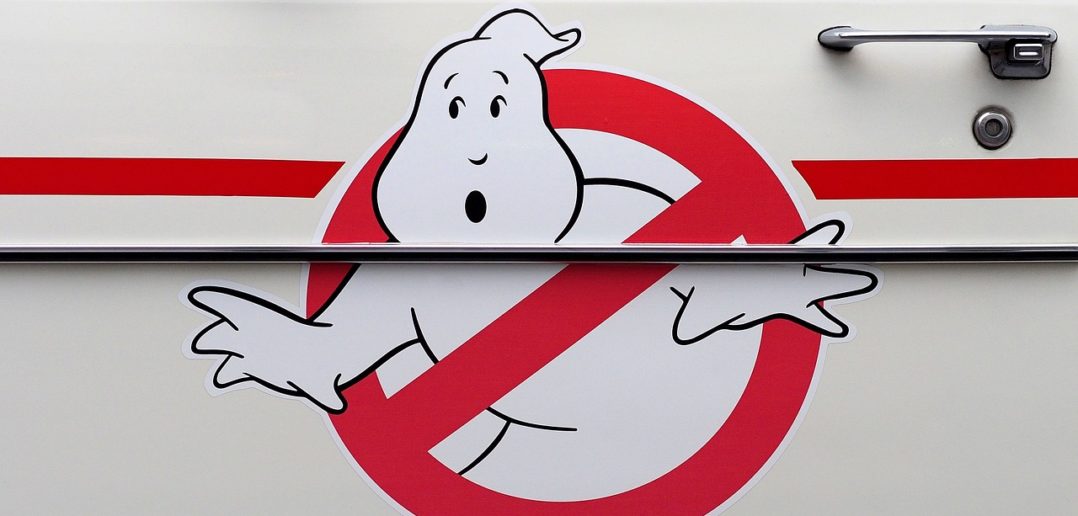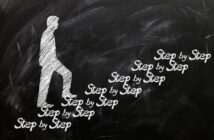More than 2 in 5 salespeople struggle with their Mental Health and data from our recent Sales and Mental Health survey indicated Buyer Ghosting is having a major impact on sales Mental Health.
This was especially true for sales reps working a hybrid sales role that required both Inbound & Outbound sales activities.
In the survey, 26.9% of hybrid salespeople listed Buyer Ghosting as one of the Top 3 things that negatively impacted their mental health. Third, behind Micromanagement and Missing Target.
|
Hybrid Role (Inbound & Outbound Sales Responsibilities) |
|
| Type of Event | Percentage of Responses |
| Micro-Management By Leadership | 51.92% |
| Missing Target | 30.77% |
| Buyer Ghosting | 26.92% |
| Compensation or Role Responsibility Changes | 25.00% |
| Meeting Daily Metrics | 25.00% |
| Working With Demotivated Salespeople | 23.08% |
| Inter-Sales Team Politics | 21.15% |
| Cold Calling | 19.23% |
| Stale Pipeline | 15.38% |
| Restarting Back at “0” | 13.46% |
| Deal Falling Through Last Minute | 11.54% |
| Customer Churn | 9.62% |
| Dealing With Upset Client | 9.62% |
| Deal Getting Pushed Back | 7.69% |
| Meeting With Manager To Review Performance | 7.69% |
| Rejection | 1.92% |
The purpose of this post is to understand how Buyer Ghosting impacts mental health and strategies to reduce the frequency of it occurring. Reducing the frequency will therefore, improve Sales Mental Health overall.
What is Buyer Ghosting?
Buyer Ghosting happens when a buyer simply stops responding and disappears during the sales process.
Typically it happens something like this:
The sales rep and buyer are connecting… Interest is established… Emails and calls are traded back and forth… Things are going great… Sometimes there is even a proposal on the table being reviewed… The buyer says…
“Yes this all looks good to me – let’s connect in a few days to move forward…”
Then POOF – the buyer disappears. They stop responding to emails, taking calls and seemingly fall off the face of the earth.
They’re gone, giving the sales rep no indication of what happened or what went wrong.
Why does Buyer Ghosting Impact Mental Health?
Depending on the sales rep this can have adverse effects on their mental health. Part of the decline in mental health and motivation can be attributed to dopamine.
Dopamine is known as the “feel good hormone” which is usually connected to feelings of pleasure and concentration.
More importantly – motivation.
It is responsible for the “rush” salespeople feel when they close a sale and are rewarded for their efforts. That feeling of invincibility to face any sales challenge and motivates the rep to close more deals.
What’s more interesting is studies have shown dopamine levels are higher when anticipating a reward, rather than receiving the reward itself.
This is important, because it means dopamine levels can be higher when salespeople are anticipating a sale closing versus when the sale actually closes.
As a result, this becomes problematic when a buyer disappears and Ghosts the sales rep. Dopamine activity – aka sales rep motivation drops – when the sales rep made an error predicting a sale closing.

http://sitn.hms.harvard.edu/flash/2018/dopamine-smartphones-battle-time/
Buyer Ghosting provides no positive or negative feedback or cue to guide sales rep behaviour. Sales reps can feel rejected, defeated and unsure of themselves – but not right away.
They’re hypnotized by the dopamine flooding their brain – anticipating a sale as it moves closer and closer to closing.
When a buyer first ghosts, sales reps might be feeling optimistic. “I’m sure something just came up with the buyer.”
Then over the next few days they might be confused. “Why won’t they respond? Did something come up? Did I do something wrong?”
Then finally – defeated. Dopamine plummets when the sales rep realizes the deal (aka reward) they were anticipating disappears.
“Why did I waste so much time and effort chasing that deal?”
Project Mamba: Stop Letting Stress Impact Your Commission Check
The Importance of Cues
Deals that fall through with “reason” (downsizing, buyer retires, buyer saying “no” etc) are easier to manage, because they provide clear cues to the sales rep.
Buyer Ghosting on the other hand does not. Without cues, the salesperson is left in limbo unsure how to react and feel. It’s like a slot machine where two wheels have stopped and the third keeps spinning.
Did I win? Or did the machine break and I should just walk away?
This is a dangerous scenario to be in when sales momentum and confidence becomes False Hope. Hope can paralyze a sales rep as they continue to anticipate and wait for their reward
I’ve invested so much time, it’s so close. I hope they will just close.
In this scenario dopamine and motivation decline over time. More time allows buyer unresponsiveness to build enough evidence to finally cue the salesperson to move on.
Unfortunately this can spur other mental health issues like depression, but also eats time. The most valuable resource of any salesperson.
The longer the sales rep is focused on the spinning wheel hoping it stops; the greater impact it will have on sales pipeline strength. Worst case scenario it leads to other mental health trigger events like Missing Target (#1 Mental Health Trigger event).
This is why receiving a “No” from a buyer is always better. It hurts, but the cue provides closure in an instant and saves the sales rep time. Dopamine levels can then reset faster and motivation can refocus on moving other sales forward.
So why do buyers do it?
Common Reasons For Buyers Ghosting
A buyer will ghost a salesperson for a variety of reasons. Below are some common reasons, but one in particular is often forgotten. A missing link to closing more deals.
Poor Professional Relationship
These relationships result from a lack of trust, rapport and credibility being built between the salesperson and buyer. Often in these scenarios the salesperson still feels like a stranger who does not have the buyer’s best interest at heart.
Avoid Conflict
Telling someone “No” can be awkward, uncomfortable or perceived as conflict. If the professional relationship is not there – it’s easier to ghost. Why should the buyer invest energy into telling a stranger they’re not interested?
Salesperson No Longer Adds Value
If a salesperson is no longer helpful and the buyer has all the information they need – why should the buyer keep engaging?
“Just following up” is not a good enough reason to contact a buyer. The more this happens, the greater the chances of a buyer ghosting. Following up with no value tells the buyer their interests are no longer the priority.
The sales rep is focused on making the sale.
Whether it’s a new case study, industry article or something to help the buyer facilitate internal discussions – a sales rep should be providing value on every interaction.
It takes effort, but shows the buyer the sales rep is a valuable resource to keep engaged.
Embarrassed
In some cases the buyer might simply be embarrassed. They’ve told the salesperson they’re excited to get started and it’s a done deal. Only to be denied approval internally hours later.
It can be difficult confronting someone to break a verbal agreement that has been made.
This is why building value on every interaction is so important. It increases the chances of the buyer working with the salesperson on an alternative solution rather than giving up entirely.
The Missing Link to Buyer Ghosting – Buyer Motivation
This is where most salespeople can improve and reduce the frequency of Buyer Ghosting.
Buyer ghosting occurs, when the buyer is no longer motivated. They’ve lost sight of the reward.
For the buyer – buying something means change and change often requires some level of pain or discomfort.
In a professional environment, justifying inaction because something is too hard to change or you’re not motivated to do it – even though it makes sense – is taboo. Far more taboo than any other previously listed reason.
So the buyer ghosts. It’s the easy way out and saves face. “I’m not lazy – it’s just not the right time.”
But how do you stop it?
Project Mamba: Stop Letting Stress Impact Your Commission Check
Motivating Buyers
Most sales reps are experts at uncovering the pains, challenges and goals of buyers. They then expertly use this information to build business cases and rational reasons as to why their product or service makes sense.
The problem is – buying decisions are not rational. They are behaviours motivated by emotions and past experiences.
The average sales rep fails to understand what is motivating the buyer to take action and what’s required to achieve their goal.
They fail to understand the buyer’s dopamine driven reward. The same chemical that is motivating the sales rep to close more deals is also motivating the buyer to change.
As a result, without identifying the reward they are unable to motivate the buyer through the pain of change.
Getting In Shape
Let’s look at a scenario between someone going to the gym for the first time and their relationship with a trainer.
In this example, the trainer has identified that their client has a goal of getting in shape.
Day 1 – The client shows up motivated to workout. Completes the workout and goes home exhausted but accomplished.
Day 2 – The client shows up 10 minutes late, sluggish and in pain from the previous day. The trainer motivates their client through the workout, because it will help them get in shape.
Day 3 – Pain > Getting in Shape – the client skips the workout and ghosts the trainer. The trainer calls and leaves a voicemail about getting in shape. No response.
Day 4 – The trainer tries emailing the client about the benefits of getting in shape. No response.
The trainer has failed to realize the client’s goal is not their motivation.
Avoiding pain changes the client’s perspective and shuts off the rational part of their brain. It becomes easy to justify being a little out of shape ain’t so bad without the right motivation.
Complacency and the status quo is comfortable. Why push through the pain to change?
Sales Reps Must Become Better Trainers
This happens all the time in sales. Buyers get fatigued and become complacent.
At some point during the sales process the buyer has realized the pain of change is greater than the pain of staying the same.
Whether it is the complexity of learning a new product, training their team, switching systems or approaching a new manager for approval – multiple factors can culminate to inaction. The buyer no longer perceives the change required to reach their goal as worthwhile.
This is when sales reps need to be more aware and motivate the buyer through the pain of change. They need to remind the buyer of the reward not the goal.
Focusing on the reward activates the buyer’s dopamine system so they take action.
Leveraging the Buyer Reward
Revisiting our gym scenario – it becomes much harder for the client to ghost when the trainer leverages the reward not the goal to motivate their client.
This time the trainer went deeper on his discovery and uncovered the motivation and reward of his client:
“The client is motivated to get in shape (GOAL), because she has a wedding coming up in 3 months (MOTIVATION) and wants to fit into her wedding dress (REWARD).”
Day 3 arrives and again…
Pain > Getting in Shape – the client skips the workout and ghosts the trainer.
This time, the trainer calls and leaves a voicemail reminding her the wedding is less than 3 months away. There is limited time to get in shape.
“Think about how great you’ll feel in your new wedding dress. You’ll have pictures to remember that day for the rest of your life. You can even show your kids how great you looked!”
Motivation involves presenting cues that trigger cravings. The trainer had his client craving admiration and fear of missing out. These are emotional motivators to reach her goal and get in shape.
Dopamine levels rise as the bride anticipates her wedding day and envisions the admiration from friends and family as she walks down the aisle in her new dress. The Reward.
Emotions motivate her and other buyers to take action and push through the immediate pain to reach their goals.
Project Mamba: Stop Letting Stress Impact Your Commission Check
Uncovering the Motivation
The challenge with motivation is sometimes buyers are unaware of why they set certain goals or behave a certain way.
A good example of this happens every year with New Year’s resolutions. Millions of people set goals to get in shape, spend more time with their family, and eat healthy. They forget to ask Why?
Why are they motivated to set and achieve these goals in the first place? What is driving the action to reach these outcomes or goals?
SaaS products get buyers like this all the time. It’s so easy to start a trial, because UX designers do a great job reducing friction and pain. Buyers go from reading a blog post to entering a sales funnel, without even knowing why they took the steps in the first place. It was effortless.
Because of this – sales reps need to uncover the buyer’s motivation.
Help the buyer bring their unconscious motivation to the conscious forefront. Help them understand their Why.
How to find the Buyer Motivation?
The easiest way to do this is through a few simple questions. Build questions to uncover the motivation in addition to the standard goals/challenges questions they’re already asking. It can be as easy as this:
Sales Rep: Noticed you started a trial for our sales lead software – what challenges is your team having finding leads?
Buyer: My sales reps are having trouble finding enough people to contact (CHALLENGE). With more leads they should be able to hit their target (GOAL).
Sales Rep: Makes sense, out of curiosity, what motivated you to take action and start resolving your lead volume challenge today, rather than a month from now?
Buyer: We missed target last month (MOTIVATION) and it’s because I’m not able to get them enough leads.
Sales Rep: Missing target is never fun… What happens if you miss target again?
Buyer: I’ll probably have to let some people go and I really don’t want to do that. (EMOTIONALLY PAINFUL/ MOTIVATION)
Sales Rep: Let’s make sure you don’t have to do that. I’m here to help…
In this scenario, the sales pitch evolves and is no longer about a lead generation platform. It’s about genuinely helping the buyer not have to face the emotionally charged task of letting someone go.
A buyer that is motivated has a higher chance of pushing through the pain of change. To invest effort into learning a new product and reduce Buyer Ghosting.
The End of The Call or Meeting
It is very important to understand the motivation of the buyer early in the sales process, but the end is also an equally critical time.
As soon as a sales call or meeting ends, the Buyer will begin facing the pain of change. They’ll be thinking:
Here are my next steps – how hard is this going to be to get this done. How big a priority is this versus the email that just came into my inbox.
At the end of a buyer interaction the sales rep needs to identify the pain of change. This will help them identify where buyer motivation could slip and how they can support them.
Answers to questions like who does the buyer need to speak to? How many people? Are they in a contract with another vendor? How complicated is this product/service versus what they are currently doing? Etc.
Getting all of these answers is crucial.
The “Buyer Support Plan” To Stop Buyer Ghosting
It is recommended that every sales rep saves at least 5 minutes at the end of the meeting to gather this information. This will help them create a buyer support plan.
A buyer support plan is used by the salesperson to support the buyer through painful, stressful or confusing situations that will arise, because of changes in the future.
The purpose of a support plan is to anticipate and Identify the Buyer Motivation Killers.
The support plan can consist of multiple strategies the sales rep uses to help ease the pain for the buyer. Here are some examples:
- Helping the buyer quantify the ROI and expected results so they can easily sway their colleagues to join the next conference call.
- Providing industry relevant testimonials that help the buyer feel confident approaching their manager for approval with social proof.
- Scheduling a second call to walk through a proposal or review the more complex parts of the sales rep’s software.
Every buyer situation might be a little different. To help reduce ghosting, sales reps need to place themselves in the buyer’s shoes and ask:
How hard is this step going to be? How can I help them?
Key Take-Aways to Stop Buyer Ghosting
Sales reps have identified Buyer Ghosting as a leading trigger for mental health decline. The event itself is damaging, but can often lead to other triggers like Missing Target.
Time is required to identify Buyer Ghosting and time is also required to make more sales.
To help reduce the impact it has on sales performance and mental health, sales reps should do the following:
- Become aware and manage their anticipation. A deal is never closed until it’s closed. This mindset will help take attention away from anticipating the reward and keep dopamine levels stable. Save the celebration for the reward of closing a deal.
- Be mindful of when a wheel on the slot machine is spinning. Avoid False Hope and waiting for a cue to move on. Keep focusing on pipeline building activities.
- Build strong professional relationships with buyers. Buyer relationships should revolve around trust and genuine interest in helping the buyer.
- Add value during every buyer interaction, even if it’s via email. Sales reps should always be working to be a resource and ease the pain of change.
- Dig deeper and uncover more than goals and challenges. Find the missing link – Individual Buyer Motivation.
- If the salesperson senses ghosting, remind the buyer of the reward at the end of the tunnel. This helps activate dopamine and motivate the buyer to take action.
- Develop a Buyer Support plan. This helps anticipate and navigate the buyer through the pain of change.
By using the techniques above, sales reps will become more mindful of buyer motivation and how to support them. This will help reduce the frequency of Buyer Ghosting and improve sales rep mental health.
If this post has been helpful – please share it with your sales community. Also check out some additional resources inside Project Mamba.
Project Mamba: Stop Letting Stress Impact Your Commission Check
About The Author

Jeff Riseley is currently the Founder of the Sales Health Alliance and Mental Health Advocate. With over a decade of sales experience – Jeff understands the importance of Mental Health in achieving peak sales performance.
Jeff combines his sales (Sales Knowledge Institute) and Mental Health expertise to improve sales performance through a mix of sales mentorship and mental health best practices. His strategies have helped sales teams improve their sales process, while helping them become more motivated, resilient and better equipped to tackle stressful events within sales.
He is currently delivering these strategies through on-site workshops, coaching and speaking engagements. To explore working with Jeff contact him at [email protected]





3 Comments
Pingback: How to Build Resilience in Sales By Becoming More Optimistic - Sales Health Alliance
Pingback: Why Closing A Sale Makes You Anxious - Sales Health Alliance
Pingback: bao | Cold Call: Urgency erzeugen und mehr Folgetermine sichern